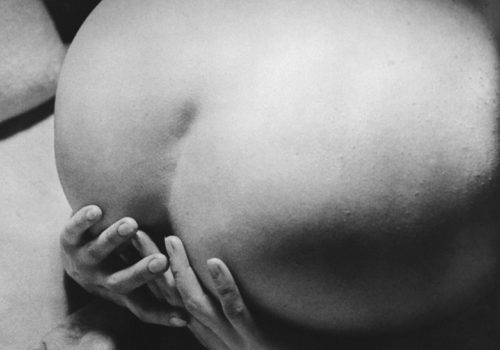Produced by the Mjellby Art Museum in Halmstad, Sweden, in collaboration with Denmark’s Øregaard Museum, Millesgården is the third and last venue to showcase a major retrospective on Man Ray that “spans two world wars and gives ample proof of the multifaceted nature of his artistic practice.”
The aim of “Man Ray: New York-Paris-Hollywood” is purportedly to present the artist as a conceptualist, one who valued the idea behind a work of art more than the work itself. This is hardly a new concept, however: Man Ray is widely known—not only to academics and scholars, but also to amateurs—as an intellectual and above all as a joker who famously commented that “the most successful art involves humor.” Man Ray’s convoluted notions of sexuality and gender, love of role play, masquerade, and self-invention, were influenced by his friend Marcel Duchamp who instilled in the younger artist an early interest in ambiguities of form and helped refine his ideas about art and modernism. Man Ray was a hybrid of sorts who shed his Jewish birth name, Emmanuel Radnitzky, in favor of a much simpler pseudonym, therefore altering the essence of his identity. As the exhibition title makes clear, Man Ray—who received his early artistic education in New York under the tutelage of gallerist and photgrapher Alfred Stieglitz—abandoned his home in New York for Paris in 1921 where he lived for nearly two decades until the German occupation during WWII forced him to seek refuge in America. He settled in Hollywood where he continued working on his art for the next decade—mainly creating photographs and paintings—but after the war Man Ray returned to Paris with his wife, Juliet, and remained there until his death in 1976. His years in Europe were perhaps his most prolific, and the exhibition highlights the work that resulted from his professional and personal relationship with Lee Miller, the American model, artist and later war photographer, whom he met in the “city of light” and with whom he would forge a lifelong friendship. Numerous books have chronicled their artistic and sexual dynamic, including several by Miller’s son Antony Penrose who attended the exhibition’s opening reception in February and who contributed several works from his mother’s archives which he manages in England. While there are no new conclusions drawn about these so-called partners in Surrealism, Penrose’s contribution is significant as his collection comprises the exhibition’s most intriguing representations, such as a fragmented Miller whose nude torso is delicately illuminated and entwined in shadows. The photograph is a testament to Man Ray’s obsession with the play of light and patterns, form and shape, as well as with the female body, Miller’s in particular.
“Man Ray: New York – Paris – Hollywood” showcases some 90 works presented chronologically that demonstrate the artist’s ability not only to conflate the notion of what art constitutes but also the role of the artist himself. While Man Ray endeavored to be considered first and foremost a painter, he was highly adept as a fashion photographer, portraitist, sculptor, printmaker, filmmaker and designer, and the exhibition does a fine job of showing his multifaceted career, including three of his avant-garde films, “Le Retour à la raison (1923), “Emak Bakia” (1926), and “Autoportrait ou ce qui manque à nous tous” (c.1930). The show presents unique vintage prints by the artist, including an array of his Rayographs, as well as lesser known photographs such as Objet d’orfévrerie and Paul et Nusch which makes use of one of Man Ray’s favorite motifs, the mirror.
While the strength of this exhibtion does not lie in its ability to form new conclusions about the work of Man Ray or to present his oeuvre in a new light, “Man Ray: New York-Paris-Hollywood” is an invaluable experience as this is, along with Mjellby’s corresponding show, the first time his art has enjoyed a major museum retrospective in Sweden; in 2004, the Moderna Museet presented a meager display of his work, exhibiting barely 40 of his photographs. Although connoisseurs of Man Ray may be disappointed by the lack of innovative thought on the part of Millesgården’s curators, the show better serves as a general overview of the artist’s career for those in Sweden hoping to see Man Ray finally given the recognition he deserves.
EXHIBITION
Man Ray: New York-Paris-Hollywood
From February 22nd to 8 June 8th, 2014
Millesgården
Herserudsvägen 32
181 34 Lidingö/Stockholm
Sweden
















